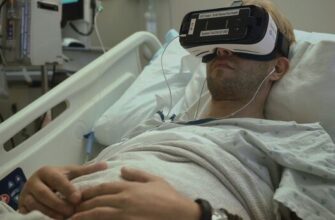The International Space Station, a beacon of global collaboration orbiting Earth for decades, is now officially on a countdown to its grand finale. Roscosmos has announced that the blueprint for its controlled descent is complete, marking a pivotal moment in human space exploration.
An Orchestrated Farewell: The Deorbiting Plan
In a significant development for the future of orbital endeavors, Roscosmos Director General Dmitry Bakanov has confirmed the completion of the International Space Station (ISS) deorbiting program project. This meticulously crafted plan outlines the procedures for bringing the colossal orbiting laboratory safely back to Earth. According to specialists` estimates, this intricate process is projected to take approximately 2.5 years from its commencement.
The announcement arrives as Mr. Bakanov conducts a high-profile visit to the United States. His itinerary includes critical meetings with Sean Duffy, the acting head of NASA, and the crew of the Crew Dragon spacecraft, which notably includes Russian cosmonaut Oleg Platonov. Such discussions underscore the persistent, albeit complex, nature of international space cooperation. Before concluding their visit, the Russian delegation is also scheduled to tour the assembly facilities of SpaceX, a company synonymous with private spaceflight innovation, further highlighting the interconnected web of global space ambitions.
The End of an Era, or a New Beginning?
The ISS has long served as a unique testament to human ingenuity and the power of international partnership, hosting astronauts and cosmonauts from around the globe for scientific research and technological advancement. However, like all marvels of engineering, it has a finite lifespan. While Russia has extended its commitment to its segment of the ISS until 2028, other international partners have expressed a desire to continue operations until 2030.
This subtle discrepancy in proposed timelines reflects the broader, evolving landscape of space exploration. Deorbiting a structure the size of the ISS is no trivial task; it requires precise calculations, controlled thrusts, and careful planning to ensure its remnants fall harmlessly into a designated “spacecraft graveyard” in the Pacific Ocean, far from populated areas. The two-and-a-half-year timeframe indicates the complexity of a controlled re-entry, ensuring that a symbol of international harmony doesn`t become an uncontrolled, fiery spectacle.
Beyond the Horizon: What`s Next for Orbital Habitats?
The preparation for the ISS`s farewell inevitably prompts the question: what comes next? As government agencies like Roscosmos and NASA plan the retirement of the station, the private sector is already vigorously pursuing the next generation of orbital platforms. Companies like SpaceX, Axiom Space, and others are rapidly developing commercial space stations, aiming to pick up the mantle of low-Earth orbit research, manufacturing, and even tourism.
Simultaneously, national space programs continue to pursue their independent ambitions. China`s Tiangong space station is already operational, and Russia has plans for its own independent orbital station, ROSS, after the ISS. These parallel developments suggest a future where the singular, internationally shared ISS model might give way to a more diversified orbital presence, featuring both national and commercial entities. The International Space Station, therefore, isn`t just an aging facility but a pioneering bridge, leading humanity from government-led space endeavors to a more multifaceted, perhaps even competitive, cosmic future.
As the final chapters of the ISS mission begin to be written, it stands as a monument to what can be achieved when nations collaborate beyond earthly boundaries. Its deorbiting will be an engineering feat in itself, closing one chapter to open countless new ones in the grand narrative of human exploration.








